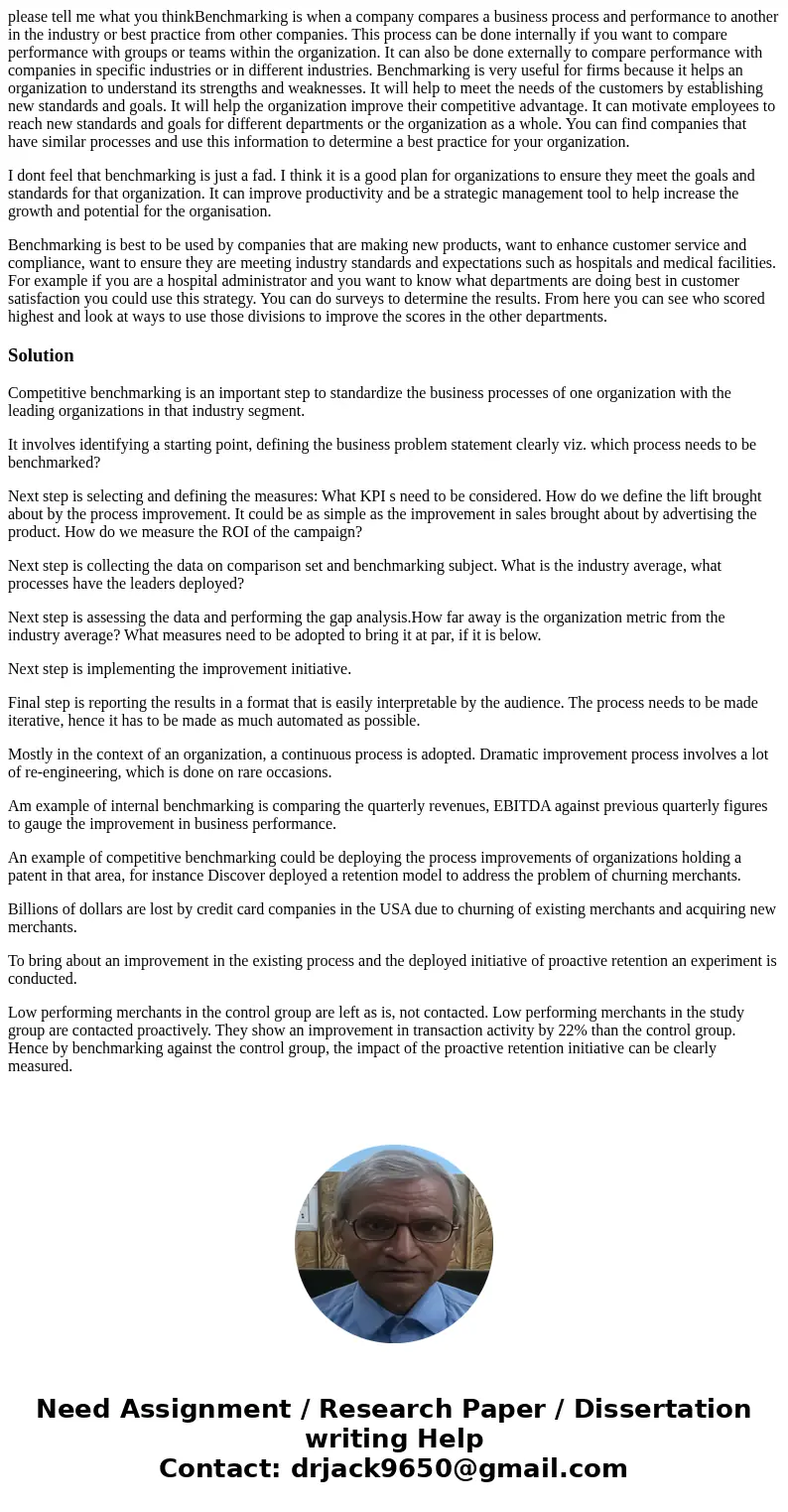please tell me what you thinkBenchmarking is when a company
please tell me what you thinkBenchmarking is when a company compares a business process and performance to another in the industry or best practice from other companies. This process can be done internally if you want to compare performance with groups or teams within the organization. It can also be done externally to compare performance with companies in specific industries or in different industries. Benchmarking is very useful for firms because it helps an organization to understand its strengths and weaknesses. It will help to meet the needs of the customers by establishing new standards and goals. It will help the organization improve their competitive advantage. It can motivate employees to reach new standards and goals for different departments or the organization as a whole. You can find companies that have similar processes and use this information to determine a best practice for your organization.
I dont feel that benchmarking is just a fad. I think it is a good plan for organizations to ensure they meet the goals and standards for that organization. It can improve productivity and be a strategic management tool to help increase the growth and potential for the organisation.
Benchmarking is best to be used by companies that are making new products, want to enhance customer service and compliance, want to ensure they are meeting industry standards and expectations such as hospitals and medical facilities. For example if you are a hospital administrator and you want to know what departments are doing best in customer satisfaction you could use this strategy. You can do surveys to determine the results. From here you can see who scored highest and look at ways to use those divisions to improve the scores in the other departments.
Solution
Competitive benchmarking is an important step to standardize the business processes of one organization with the leading organizations in that industry segment.
It involves identifying a starting point, defining the business problem statement clearly viz. which process needs to be benchmarked?
Next step is selecting and defining the measures: What KPI s need to be considered. How do we define the lift brought about by the process improvement. It could be as simple as the improvement in sales brought about by advertising the product. How do we measure the ROI of the campaign?
Next step is collecting the data on comparison set and benchmarking subject. What is the industry average, what processes have the leaders deployed?
Next step is assessing the data and performing the gap analysis.How far away is the organization metric from the industry average? What measures need to be adopted to bring it at par, if it is below.
Next step is implementing the improvement initiative.
Final step is reporting the results in a format that is easily interpretable by the audience. The process needs to be made iterative, hence it has to be made as much automated as possible.
Mostly in the context of an organization, a continuous process is adopted. Dramatic improvement process involves a lot of re-engineering, which is done on rare occasions.
Am example of internal benchmarking is comparing the quarterly revenues, EBITDA against previous quarterly figures to gauge the improvement in business performance.
An example of competitive benchmarking could be deploying the process improvements of organizations holding a patent in that area, for instance Discover deployed a retention model to address the problem of churning merchants.
Billions of dollars are lost by credit card companies in the USA due to churning of existing merchants and acquiring new merchants.
To bring about an improvement in the existing process and the deployed initiative of proactive retention an experiment is conducted.
Low performing merchants in the control group are left as is, not contacted. Low performing merchants in the study group are contacted proactively. They show an improvement in transaction activity by 22% than the control group. Hence by benchmarking against the control group, the impact of the proactive retention initiative can be clearly measured.

 Homework Sourse
Homework Sourse